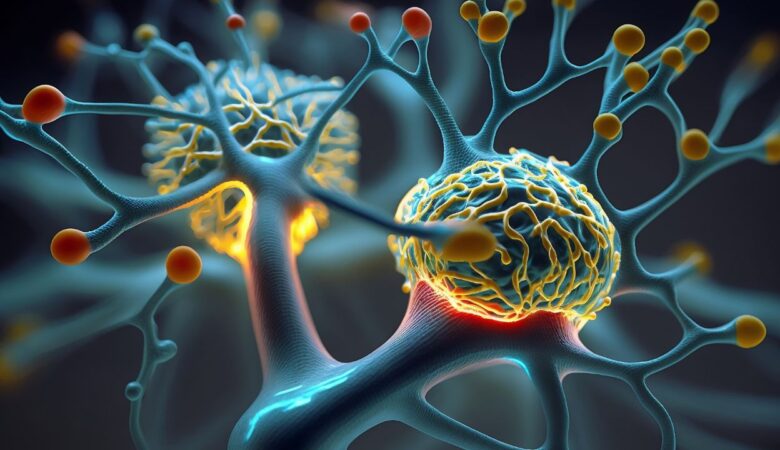Assessing Your Emotional Well-Being: Take the Relationship Anxiety Test
Are you feeling a bit uneasy about your relationship? Do you find yourself constantly second-guessing your partner’s intentions or worrying about the future of your love life? If so, you may be experiencing what is known as relationship anxiety. This common but often misunderstood emotional state can have a significant impact on your overall well-being and happiness. But fear not! In this blog post, we’ll delve into the world of relationship anxiety and guide you through an insightful tool: the Relationship Anxiety Test. So, buckle up and get ready to assess your emotional well-being in order to take charge of your love life! Understanding the Importance of Emotional Well-Being Emotional well-being plays a crucial role in our overall happiness and quality of life. It refers to the state of our mental and emotional health, which includes how we feel about ourselves, how we handle stress, and how we navigate relationships. When our emotional well-being is thriving, we experience greater resilience, positive self-esteem, and healthier connections with others. Nurturing our emotional well-being is essential because it impacts every aspect of our lives – from personal relationships to professional success. When we prioritize our emotional health, we become better equipped to handle challenges and setbacks that come our way. We develop a stronger sense of self-awareness and are more attuned to our needs and boundaries. Furthermore, emotional well-being influences the quality of our relationships. When we are emotionally healthy, we can communicate effectively with loved ones, express empathy towards their emotions while maintaining healthy boundaries for ourselves. In today’s fast-paced world filled with constant demands and pressures, it’s easy for emotional well-being to take a backseat. However, acknowledging its importance allows us to make conscious efforts towards nurturing it through self-care practices such as therapy or mindfulness exercises. Remember: You deserve happiness on all fronts – including your emotions! So let’s dive deeper into relationship anxiety – an important element within the realm of emotional well-being – so you can gain a better understanding of yourself and your love life. Also read: 10 Simple Yet Effective Stress Management Techniques You Can Start Using Today What is Relationship Anxiety? Relationship anxiety refers to the feelings of worry, fear, and insecurity that can arise in romantic relationships. It is a common phenomenon that many people experience at some point in their lives. However, it’s important to note that relationship anxiety is different from normal relationship jitters or doubts. Relationship anxiety often stems from underlying issues such as past traumas, attachment styles, or low self-esteem. These factors can contribute to feelings of doubt and uncertainty about the stability and future of the relationship. People with relationship anxiety may constantly question their partner’s love and commitment, fear abandonment or rejection, have difficulty trusting their partner’s intentions, or feel overwhelmed by thoughts of potential problems or conflicts in the relationship. These anxious thoughts and emotions can manifest in various ways including excessive worrying, constant need for reassurance from their partner, avoidance of intimacy or commitment, jealousy or possessiveness, and even physical symptoms like headaches or stomachaches. It’s important to remember that experiencing occasional doubts or concerns in a relationship is normal. However, if these anxieties become persistent and start interfering with your daily life and overall well-being; it may be time to assess your emotional well-being through a relationship anxiety test. By understanding what triggers your anxieties within relationships you’ll be better equipped to address them head-on! Signs and Symptoms of Relationship Anxiety Relationship anxiety can manifest in various ways, affecting individuals differently. It’s essential to recognize the signs and symptoms so that you can address them effectively. Here are some common indicators of relationship anxiety: Constant Worry: If you find yourself constantly worrying about your relationship, questioning its stability or future, it could be a sign of relationship anxiety. These worries may revolve around fear of abandonment or not being good enough for your partner. Overthinking: People with relationship anxiety often overanalyze every aspect of their partnership, searching for hidden meanings or potential problems where there may be none. This excessive rumination can lead to increased stress levels and strain on the relationship itself. Insecurity and Jealousy: Feeling insecure or jealous in a romantic relationship is normal to some extent, but when these feelings become persistent and overwhelming, they may indicate underlying anxieties about the connection. Physical Symptoms: Relationship anxiety can also manifest physically through symptoms such as headaches, stomachaches, restlessness, difficulty sleeping, changes in appetite, or even panic attacks. Avoidance Behavior: Some individuals with relationship anxiety may exhibit avoidance behavior by withdrawing emotionally from their partner or avoiding situations that trigger their fears and anxieties. It’s important to remember that experiencing one or more of these signs does not necessarily mean you have an unhealthy level of relationship anxiety; however, if these symptoms persist and interfere significantly with your well-being and relationships over time – seeking professional help might be beneficial. Taking the Relationship Anxiety Test Have you been feeling uneasy or doubtful about your relationship lately? It’s natural to have some concerns, but if these worries are consuming your thoughts and causing significant distress, you may be experiencing relationship anxiety. To gain a better understanding of your emotional well-being in relation to your partnership, it can be helpful to take a relationship anxiety test. This simple assessment tool is designed to gauge the level of anxiety you may be experiencing within your romantic relationship. By answering a series of questions honestly and reflecting on your responses, you can gain valuable insights into the current state of your emotional well-being. The relationship anxiety test typically explores various aspects of your thoughts, feelings, and behaviors within the context of your partnership. It may inquire about trust issues, fear of abandonment, excessive jealousy or possessiveness, constant doubts or second-guessing, and overall satisfaction with the relationship. By taking this test and considering its results in conjunction with other signs and symptoms you may be experiencing (as discussed earlier), you can start building a clearer picture of how










